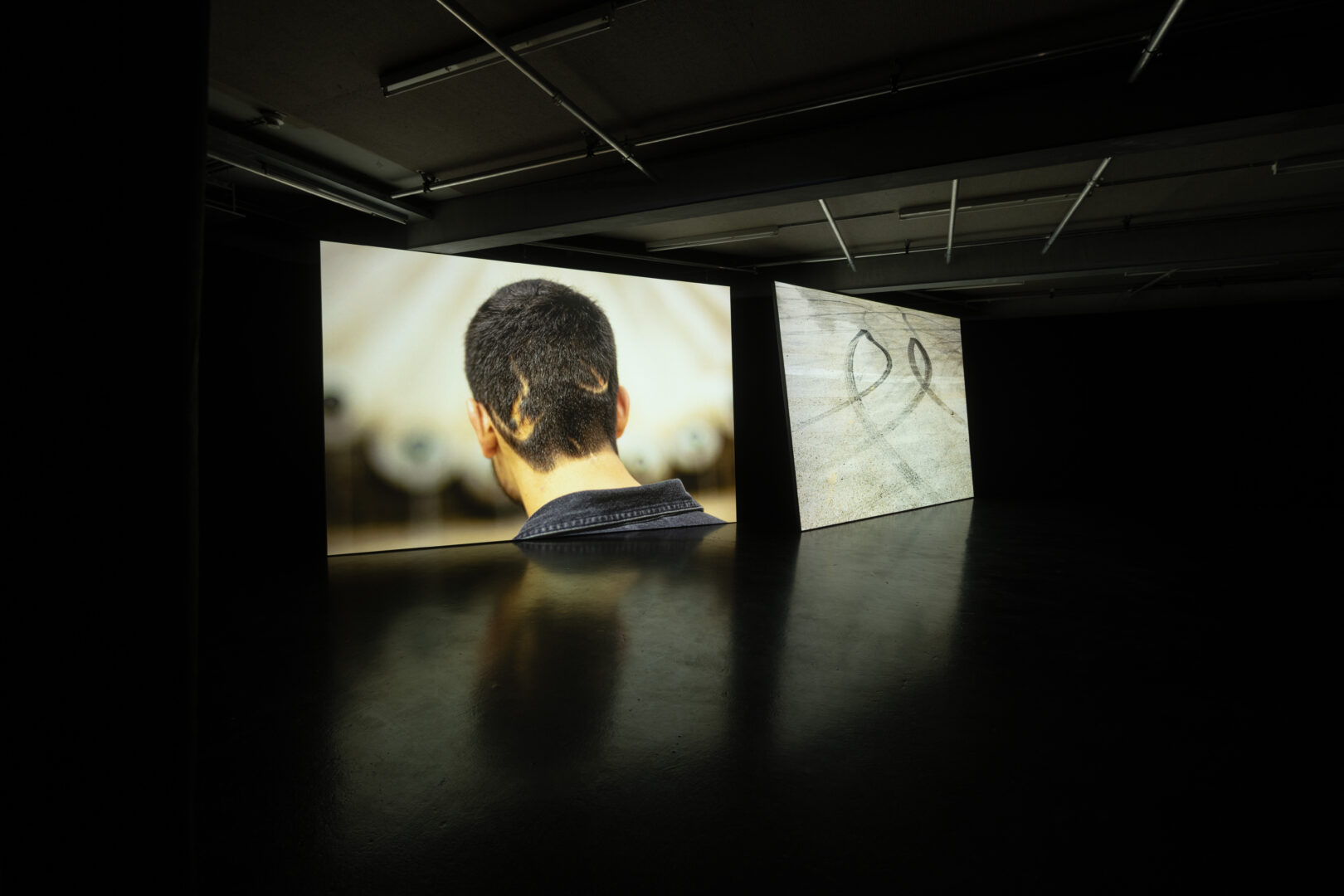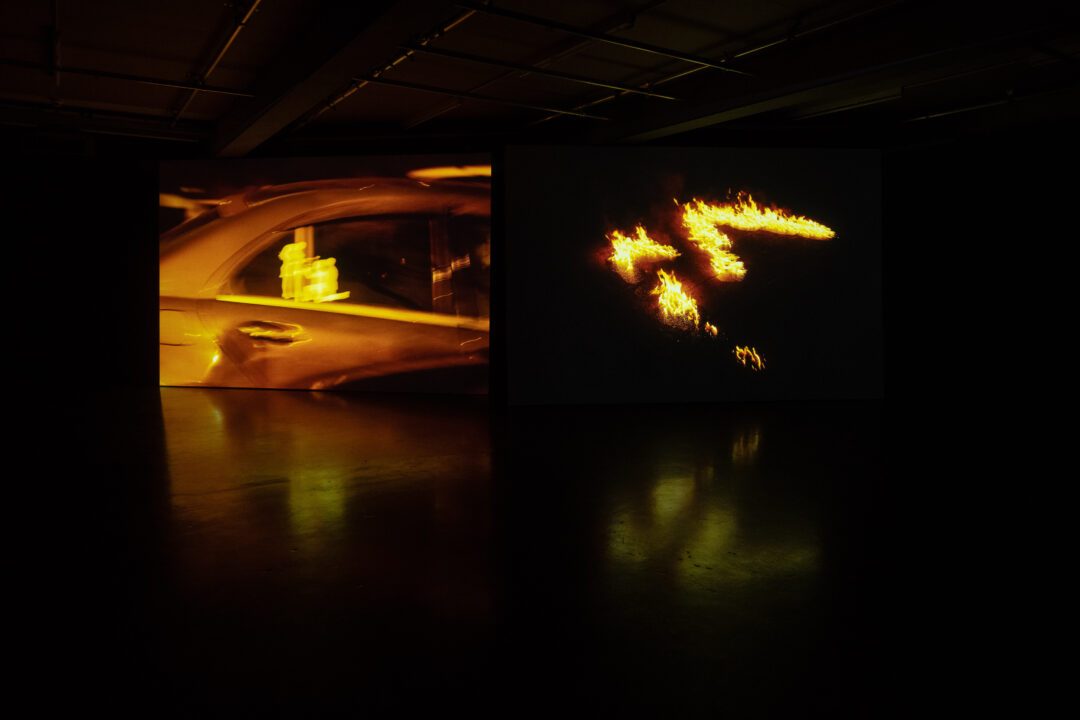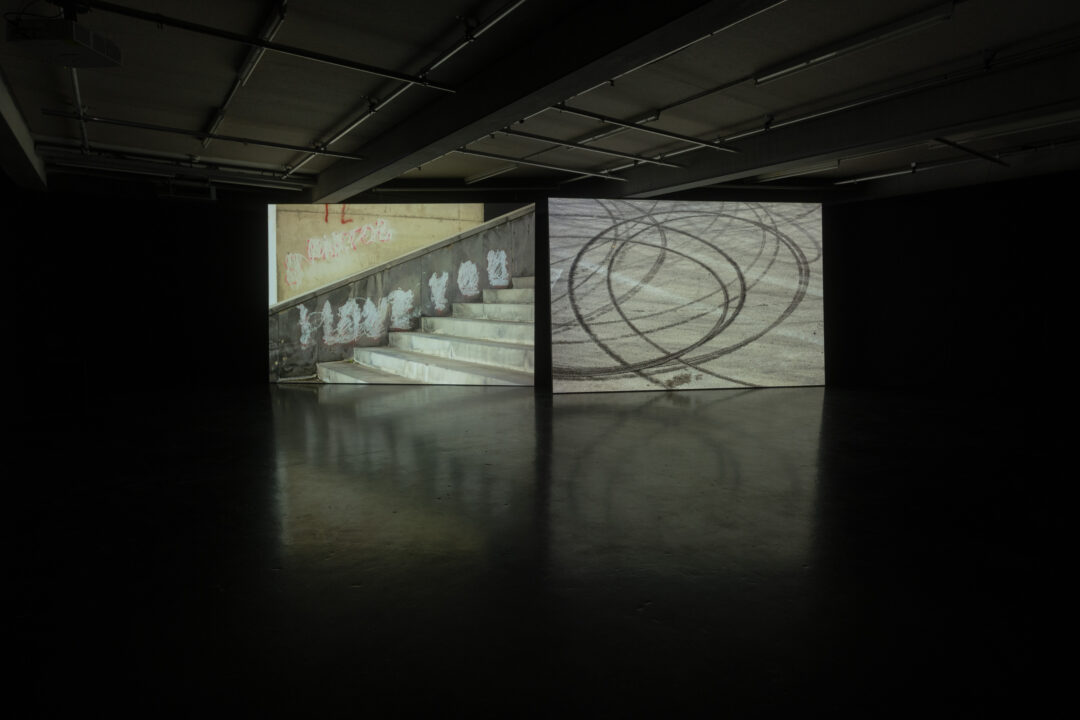Text by Daria Kravchuk
Installation views by Camille Blake

Cityscapes serve as a visual and philosophical language to address the contradictions of contemporary life. This topos allows for a critique of living and working environments that evaluates policymakers’ impact. Artists working with cityscapes as material navigate the boundary between art and urbanism. Their work often presents visionary proposals that draw attention to overlooked aspects of human scale and the psychology of movement through shared spaces. Such approaches highlight the social hierarchies inscribed in concrete and render legible urban designs that foreground crowd control and surveillance.
Artists researching this domain prompt viewers to reflect on how urbanism can either enhance or diminish a sense of common good and public life. Viewed as catalysts for social change, urban policies and development strategies risk alienating individuals from culture, self-expression, and community, which ultimately erodes a sense of solidarity. To counter these trends, artistic projects strive to draw us closer to communal and cross-cultural engagement, resisting the potential disintegration of shared values and connections.
Mari Kalabegashvili, a visual artist based in Tbilisi, works within the realm of photographic and multimedia practice. She seeks to delve into the essence of urban cohabitation in order to recognize the role of culture, and subcultures, in reflecting identities, opening new discursive terrains, and engaging in community-oriented projects. Kalabegashvili navigates the challenges—often visible but not immediately apparent—of contemporary life within social and urban landscapes.
The City as Playground
If You Catch My Drift sensitively touches upon the subject of one’s personal orientation within the public realm and the states in-between. It emerged from research Kalabegashvili initiated in 2022–2023. The artist’s practice of embedding herself within a specific subculture served to raise questions about the urban context as a metaphor for local current events, with the evolution and reconfiguration of the city echoing broader societal agendas.
Kalabegashvili’s methodology emerged from researching Tbilisi’s urban environments through the context of street racing and, more specifically, the Georgian Automobile Federation and a group of automotive enthusiasts who compete both on the streets and in professional events. The artist embarked on the project in response to feeling personally alienated from Tbilisi, despite her lifelong connection to the city. This sense of dissociation was heightened by Georgia’s restrictive political atmosphere. The turning point came during nighttime activities with friends engaged in the graffiti and skateboarding scenes, which led to an unexpected immersion in the car-racing community.
Despite a lack of personal interest in cars, Kalabegashvili began to see this subculture as a captivating form of radical engagement with the city. The streets, at least for the duration of a race, turned into a reclaimed playground—a site with a unique aura and potential. The context of car racing, which the artist views as a form of gentle rebellion, offered a means to mark territory, both literally and metaphorically. As the wheels of racing cars leave traces on the roads, like signatures of the drivers, Kalabegashvili captures the patterns of spiraling rubber tracks, reevaluating them both as a testament to the energy and individualism of the man-car construct, and as a form of claiming personal space within a tumultuous political climate.


The artist’s involvement in car racing became a therapeutic escape, an unlikely place for individual self-reflection. Both watching and participating in these activities brought about a newfound sense of vitality, prompting her to delve further into Rally Championships, and capturing portraits of drivers and their environments. Through conversations and casual interactions with the drivers, it became apparent to Kalabegashvili the extent to which their childhood experiences influenced the development of their careers in male-dominated sports. Conversations also revealed shared sentiments of seeking ways to express non-conformity, self-observation, and community belonging. Those were the ideas Kalabegashvili aimed to transfer into the visual, photographic realm. She extended this exploration to similar communities in Armenia and Croatia, finding similarities in style and cars across different locations.
Decoding Tbilisi’s Public Sphere
If You Catch My Drift is rooted in the context of Georgia. The artist’s ongoing project explores the relationship between individual and collective memories, public and private spaces, and the idea of a woman claiming male-dominated realms within a cityscape. It also responds to cultural and ideological codes built into the current state of the city. In order to document and understand the local momentum, it is crucial to delve into the unique relationship between public and private spheres, a relationship that is thematized by several local initiatives.
One such project embedded in the city’s fabric is The Tbilisi Architecture Biennial (TAB), which connects its biennial chapters via the umbrella of storytelling. In the third edition of TAB in 2022, the research highlighted temporality in urban and social life. Like in many post-socialist states, citizens of Georgia perceive their lives in terms of temporality, one in which tomorrow is unknown. It’s a prospect that is daunting yet also provides space for creativity. Drawing from Georgia’s recent history, the concept of temporality intersected with conditional factors, exploring time, space, and the built environment. The discussion aimed to examine architecture within the context of duration rather than its physical dimensions, thereby emphasizing its coexistence with everyday life. Another recent example of self-organization around a private-public theme is The Kibe Projekt, initiated by the team of international architects and researchers. It stands out for its focus on preserving and renovating a historic courtyard staircase in Tbilisi’s city center. This nineteenth-century structure, an iconic wooden spiral staircase, was deteriorating. Extensive surveys—historical, geological, topographical, structural— led to the preservation of this significant historical element, ensuring one of the unique urban routes within the cityscape.
In this context, Kalabegashvili expands her research beyond image production, probing the political and aesthetic complexities of the city. She asks questions about ideologies, controversies, legacies, and future images within cityscapes. Her vision, presented here as a multi-channel projection, seeks to recontextualize sites of supposed anonymity. Operating at the intersection of art and urbanism, Kalabegashvili immerses viewers in the performative aspect of claiming both private and public spaces.
You are currently viewing a placeholder content from Vimeo. To access the actual content, click the button below. Please note that doing so will share data with third-party providers.
More Information